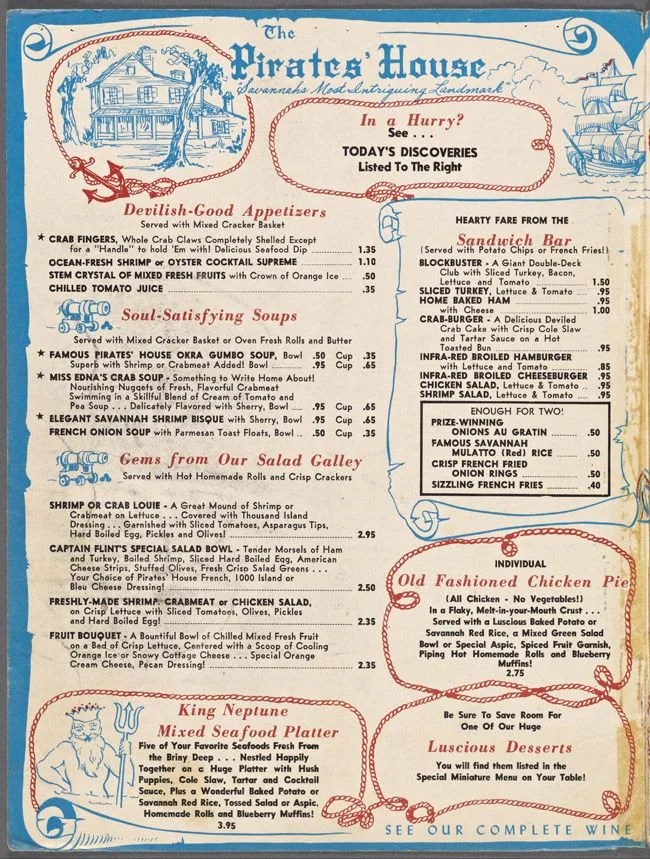Like a starched time capsule, a menu preserves a moment — a day, the food on offer and the gastronomical aspirations of those about to consume the fare described. They’re mini narratives, slices of life told through the food on hand, the intention of the chef, and, of course, the verbal flourish of the menu scribe. In the age of Yelp and instant photo preservation, our menus often get pushed to the side of the table or too quickly returned to the server. They’re seen as a vehicle for the real show to arrive, when we’ll take out our phones, snap a picture, and share. But there was a time when a menu slipped into a jacket pocket meant a souvenir from a meal — a way of preserving the moment and solidifying a memory.
Miss Frank E. Buttolph started collecting menus for the New York Public Library in 1900. In 24 years with the library, she collected 25,000 menus. The collection has since built to 45,000 items, of which 1,328,781 dishes have been transcribed from 17,541 menus (as of writing). They’re showcases of places long gone, or institutions now long-established. There are great moments of history — Christmas on Alcatraz, a meal onboard the Concorde — and there are the moments of fantastic culinary delight — Meat-n-Tater’s carne-heavy menu, or the 414 items available at Lindy’s. All look to capture the spirit of culinary adventure, and all draw in diners who, as the Gourmet Society writes, “have palates esthetically sensitive to good food and drink, and who have imagination enough to cherish the gourmet tradition.” – Matthew Ankeny
The Havana Hilton
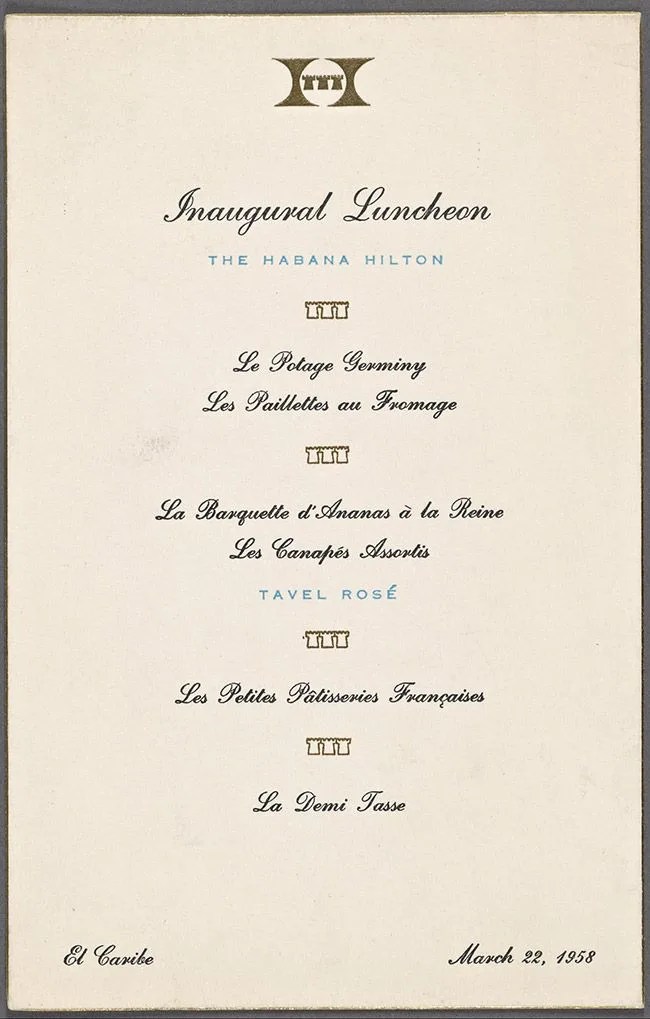
Lindy’s
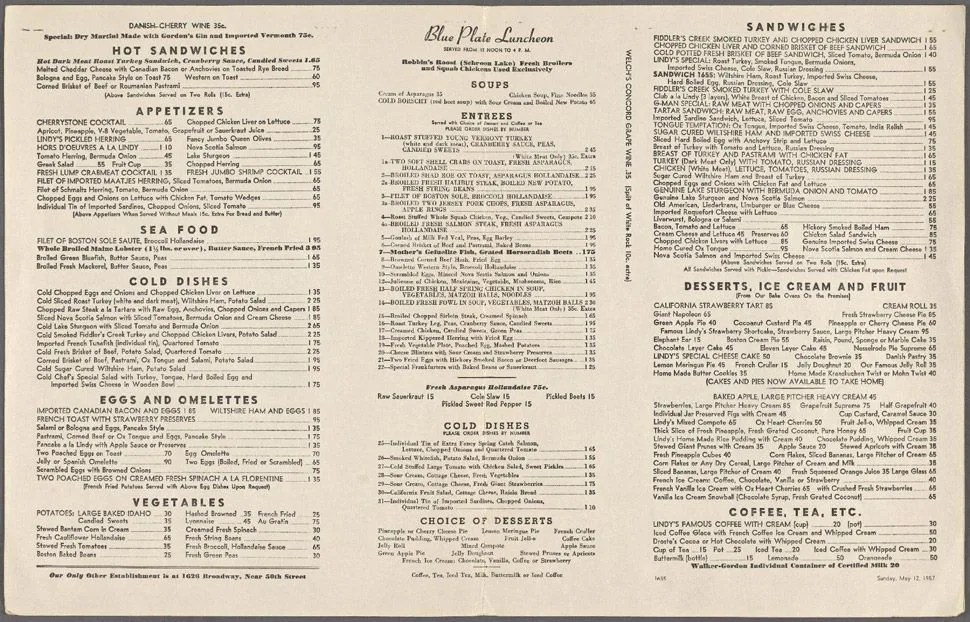
United Airlines
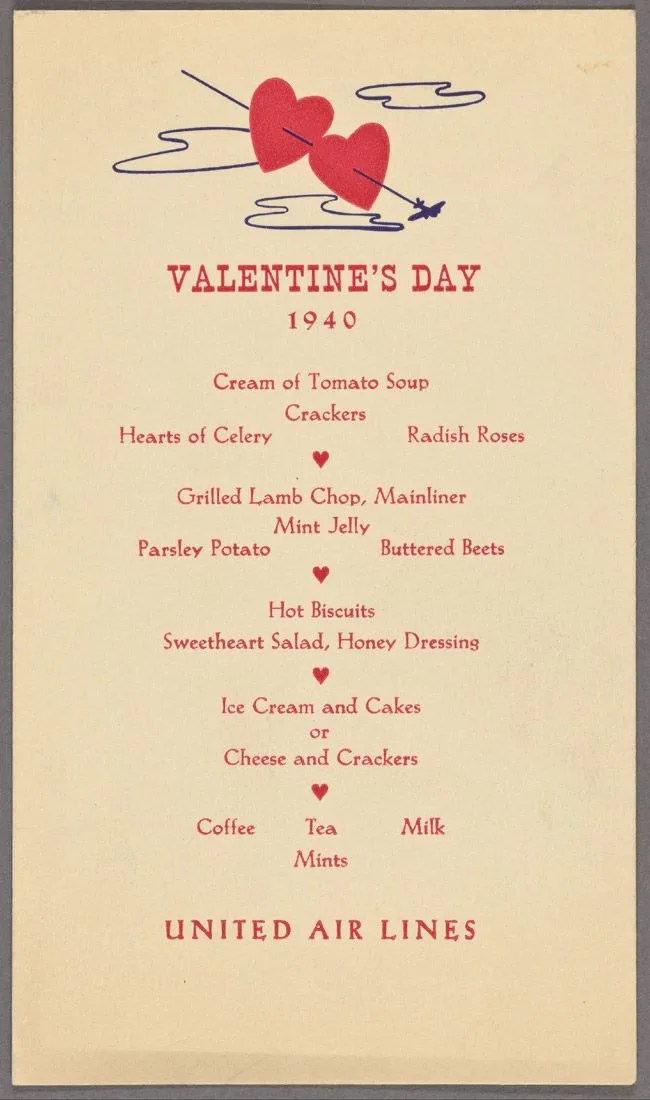
Lum Fong Restaurant
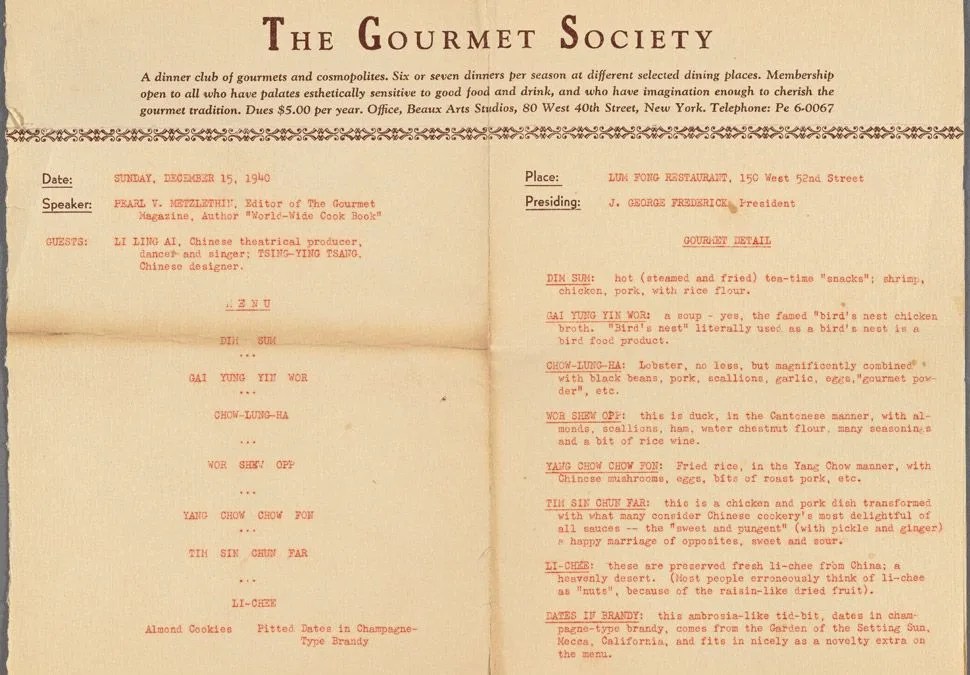
Astor House
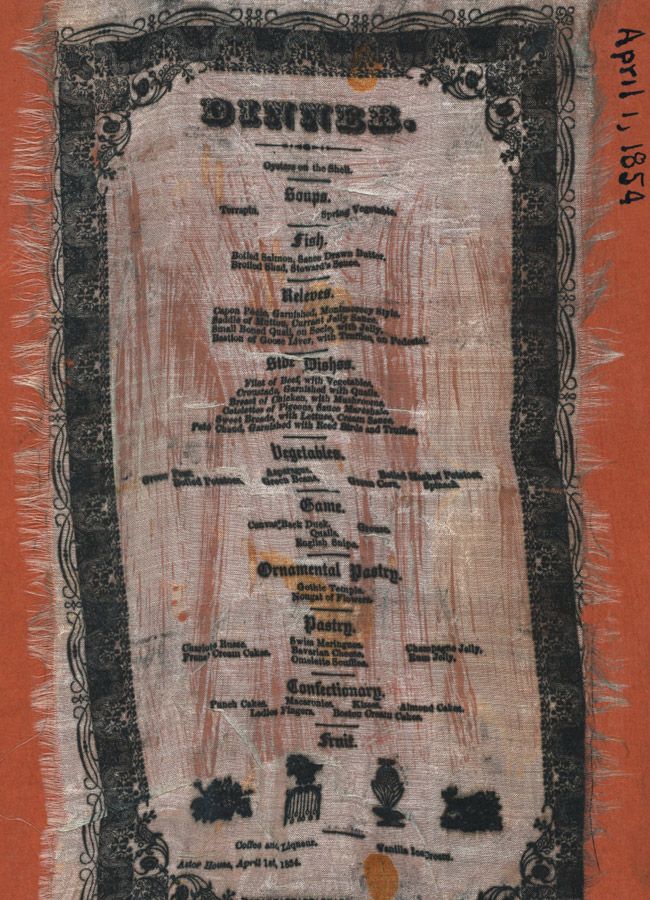
Alcatraz
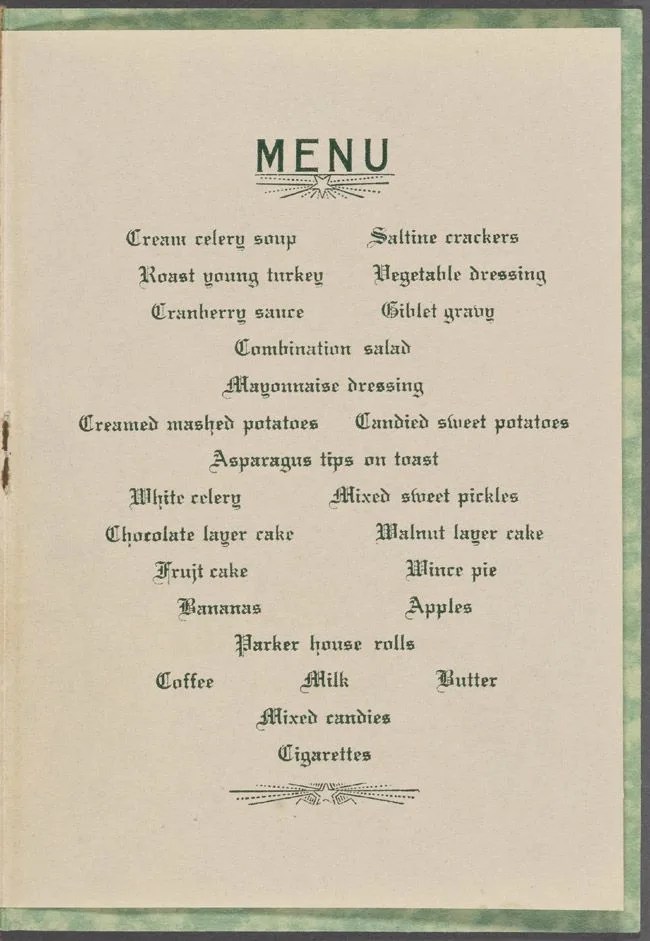
Swiss Pavillion, New York World’s Fair
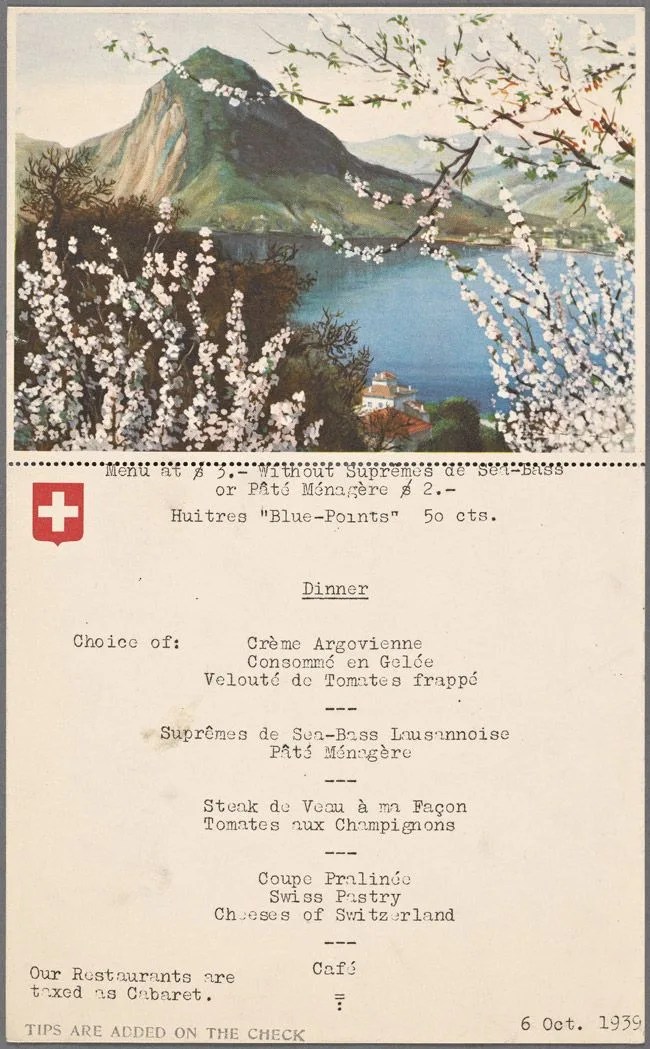
Tam O’Shanter
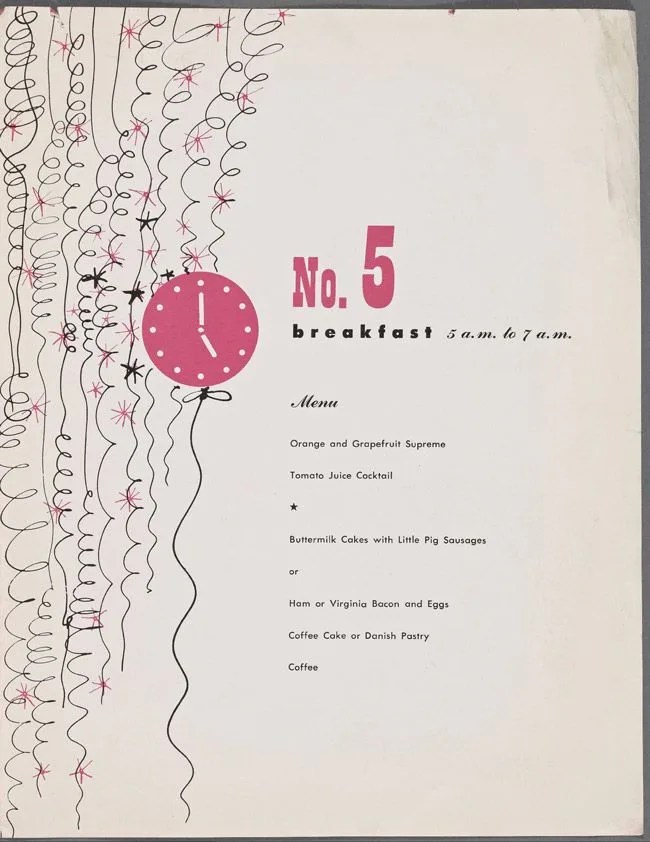
United Airlines Pittsburgh To Baltimore
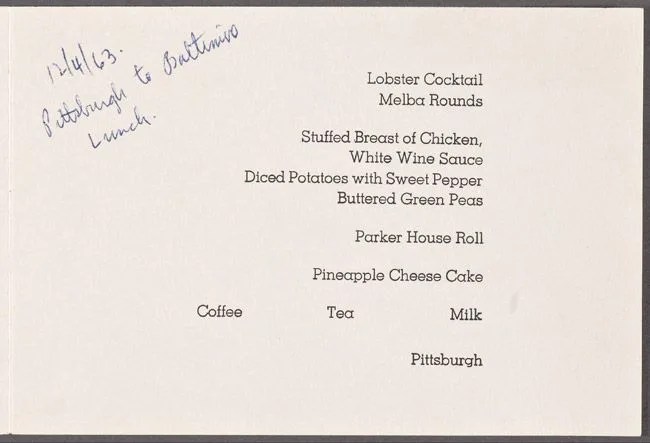
Meat ‘N Taters
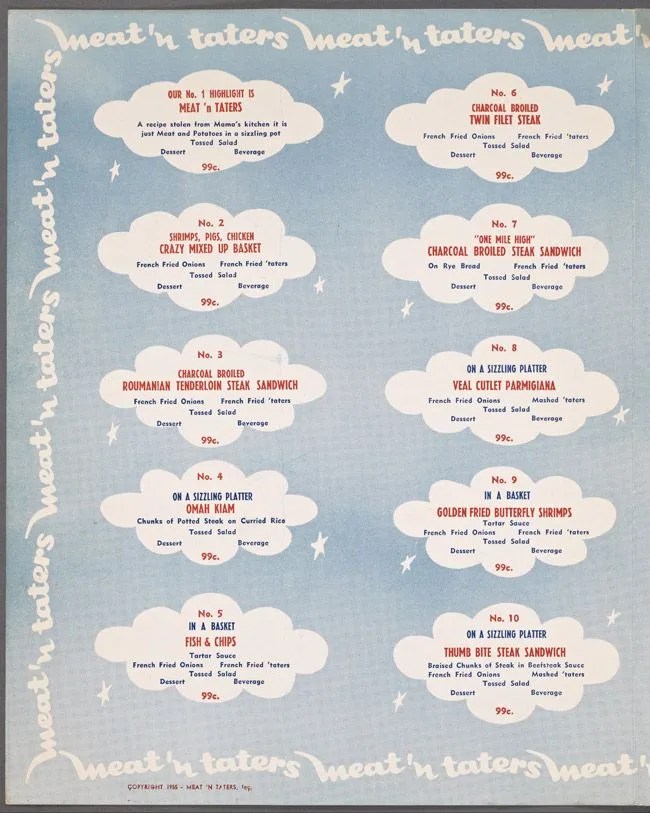
Mart Ackerman’s Saloon
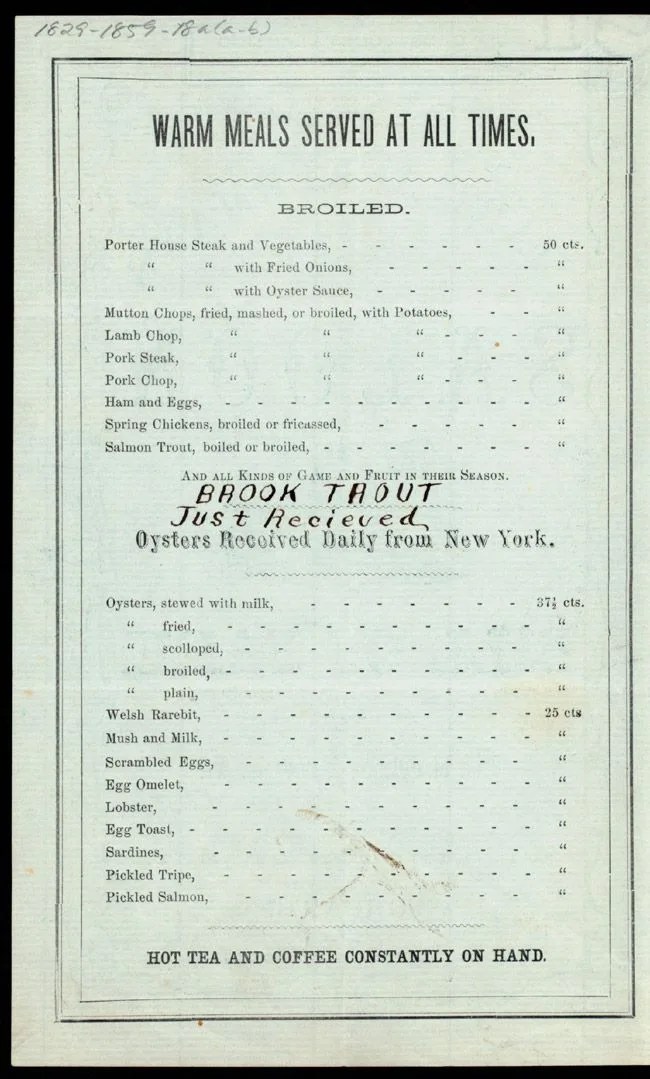
Concorde, Paris To New York
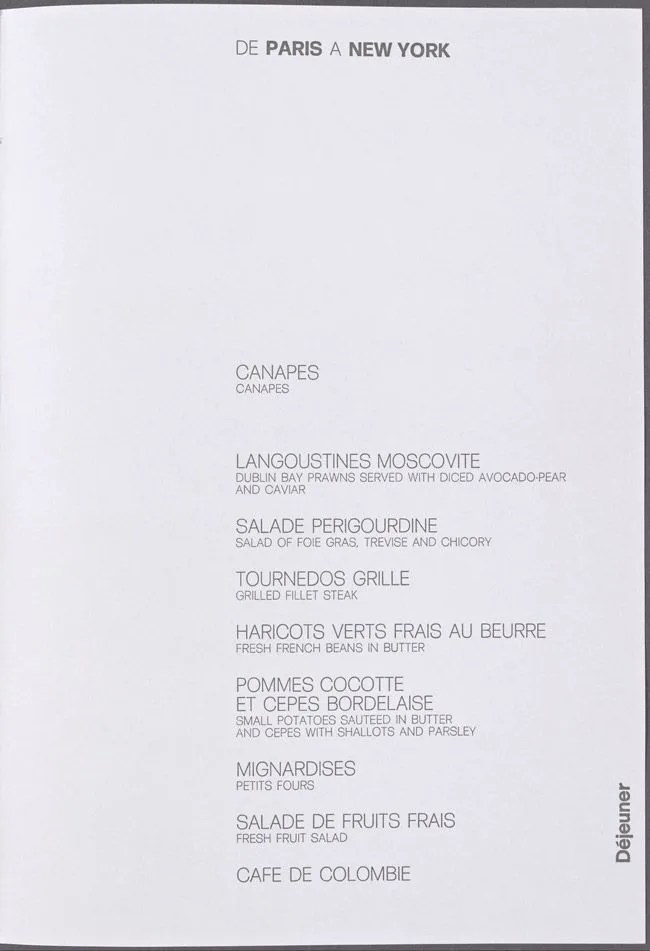
Yang Yang Too
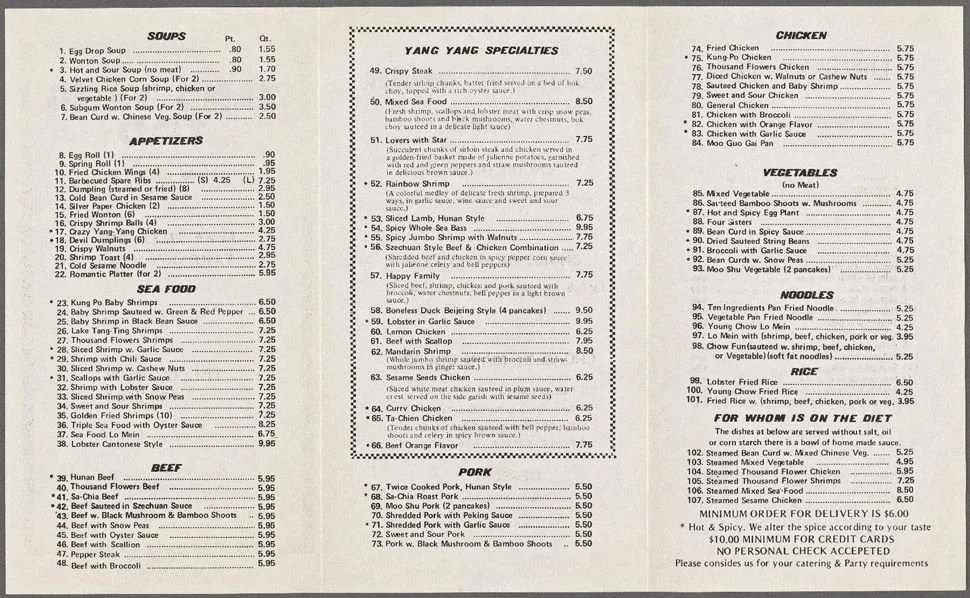
The Pirates’ House
